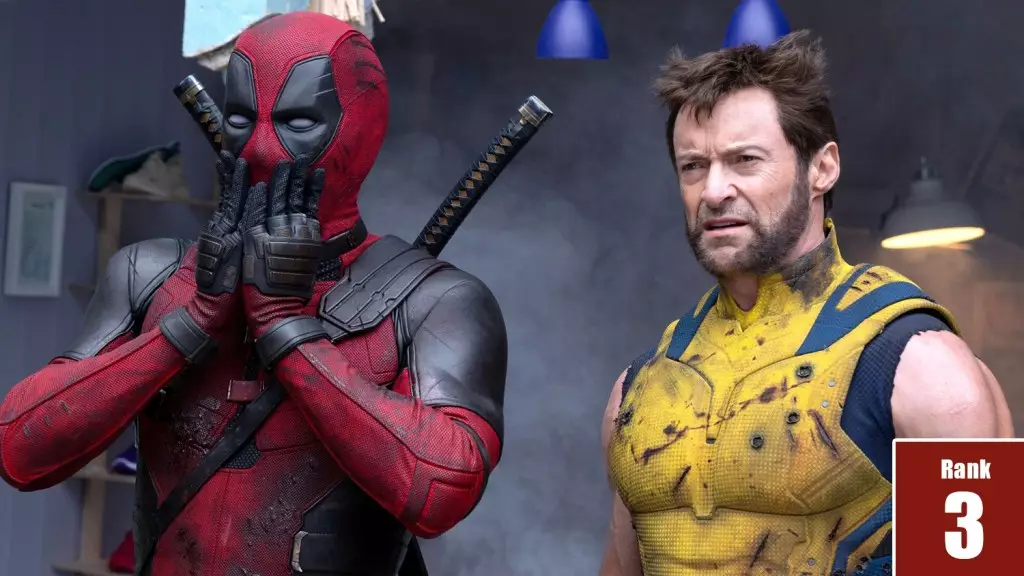In an era where streaming platforms dominate and traditional cinema faces seismic shifts, the landscape of film profitability has transformed dramatically. The latest iteration of Deadline’s Most Valuable Blockbuster tournament has unveiled insights into how box office successes are just one flickering candle in the larger bonfire of a movie’s financial journey. In 2024, the distinction between a flop and a blockbuster isn’t merely black and white; it’s riddled with complexities determined by downstream revenues and multimodal viewing windows. While conventional studios like Disney and Warner Bros. base their success on theatrical performance, newcomers like Amazon and Apple are creating a parallel universe where a film’s life after the theater is of paramount importance.
However, here we find a quizzical paradox whereby traditional performance metrics are obsolete. By excluding these streamers from the annual survey, the industry’s insiders overlook a crucial evolution in media consumption, raising questions about the future of corporate evaluations and consumer preferences. Perhaps this exclusion serves as a critique rather than a validation of the conventional wisdom that has guided film revenues for decades.
The Breathtaking Comeback of Deadpool
When Disney inherited 20th Century Fox’s Marvel properties, they faced a beast in Deadpool—an R-rated antihero who defied the corporate mold of superhero films. The anticipation surrounding “Deadpool & Wolverine” melded nostalgia with sheer curiosity; had theatrical experiences become so stale and monotonous that audiences were clamoring for raunchy escapism? The brilliance of letting Deadpool thrive while being largely absent from the screen for several years certainly amplified the film’s allure. By strategically releasing it after a period of industry-wide disruption, both the audience and the creators enjoyed a unique catharsis.
Director Shawn Levy’s take on this franchise, opting for humor that aligns closely with the pulse of contemporary pop culture, successfully captivated audiences. Rather than simply recycling prior successes, the combination of explosive comedy and poignant buddy dynamics, reminiscent of cult classics like “Airplane!” and “Midnight Run,” breathed new life into the genre. The chemistry between Ryan Reynolds’ rambunctious Deadpool and Hugh Jackman’s Wolverine redefined expectations. Here, a hero can be complex and vulnerable without losing their edge, showcasing the evolution of character arcs in comic book adaptations.
Marketing Wizardry and Audience Engagement
The marketing campaign for “Deadpool & Wolverine” was nothing short of genius. Disney escalated excitement by leveraging major events like the San Diego Comic-Con for sneak previews, engaging fans with exclusive content and a palpable sense of community. The rapid-fire promotional tactics included record-shattering ticket sales, engagement through social media, and even humorous collectible merchandise like Wolverine-themed popcorn buckets. Unlike traditional marketing cycles that see gradual build-ups, Disney capitalized on the viral nature of anticipation, achieving staggering figures that startled even industry insiders.
Moreover, the relentless marketing dynamic, which included trailblazing advertisements during the Super Bowl, effectively warped the perception of what an R-rated Disney movie could achieve. The resultant $200 million opening shattered expectations, showcasing not only the audience’s loyalty to the brand but also a profound shift in consumer behavior. This embraces the notion that viewers today are eager for authenticity coupled with irreverence, as they rally behind a product that acknowledges its own absurdities.
The Crossroads of Cinema’s Future
“Deadpool & Wolverine” stunned critics and audiences alike through its sheer audacity. However, while celebrating its box office triumph, we must grapple with a major concern: what does the resounding success say about the current state of cinema? Are we endorsing a model where only oversized personalities and established franchises dominate, pushing original narratives to the periphery? The film’s gross of over $1.3 billion highlights the vulnerability of risk-taking storytellers operating outside the box office’s gilded cage. Although “Deadpool & Wolverine” exemplifies excellence, we must remain wary about becoming ensnared in a cycle of sequels and reboots at the expense of nurturing new ideas.
Indeed, this very tension encapsulates the dichotomy facing the industry: the lucrative prestige of established properties juxtaposed with the essential need to champion originality and creativity. As we witness the resurrection of familiar characters, we must ask how future filmmakers can carve their paths without enshrining this franchise dominance as an indelible norm. In an age where box office records hold more significance than critical acclaim, the balance between profit and innovation teeters precariously, beckoning both industry leaders and audiences alike to reflect.

